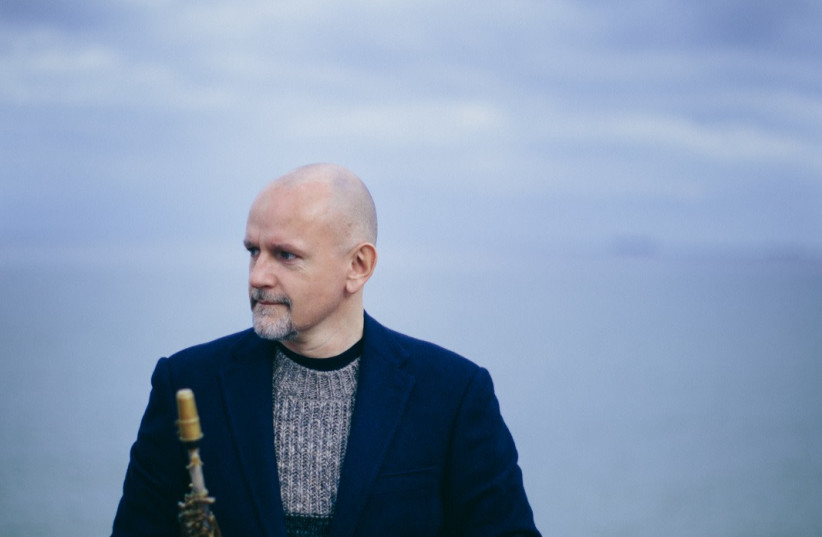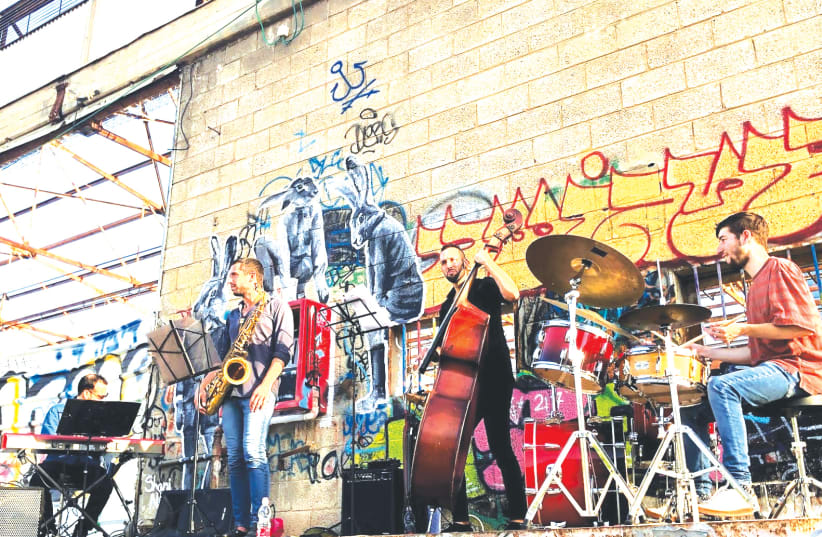One of the more fascinating facets of jazz is its ability to take on nuances in different spots around the world without losing its genre identity.
While the core of the discipline remains, largely, African-American, and anyone looking to make strides in the jazz arena simply has to get a deep understanding of the basics of the rhythms, once you’ve got the grammar and syntax of the musical language in your system, you can just take off as you please. In the business, this is called “finding your own voice.”
Adam Pieronczyk has had a good idea of where he is coming from, and where he might head, for some time now. The 51-year-old Polish reedman is one of the standout names on the roster of the sophomore edition of the Polish Jazz Festival, which is to take place at Terminal 4 in Tel Aviv, November 17-19, with the live-action complemented by some online screenings from jazz venues in Poland.
The festival started out last year in a virtual format only, under the aegis of the Adam Mickiewicz Institute in Poland, the Polish Institute in Tel Aviv and the Israel Jazz Society, with Barak Weiss serving as artistic director.
The same crew is fully on board this year, too, with Weiss lining up an impressive array of leading lights of the local community, such as pianist Anat Fort and saxophonist Daniel Zamir, who, in pre-corona times, were kept busy on the global jazz festival and club circuit.


Local jazz fans will be delighted to have the opportunity to get into the thick of a three-day festival and will, no doubt, be particularly intrigued by the inclusion of Pieronczyk in the program. The saxman is a recognized powerhouse of the European jazz scene, and as a no-holds-barred exponent of the more feral side of the jazz tracks, although he is certainly not averse to some balladic fare either.
The saxophonist, composer, bandleader and producer has accumulated a widely ranging discography of 25 albums, starting with Temathe - Water Conversations, released when he was just 25.
His latest record, I’ll Colour Around It, is a quartet escapade that runs the gamut from straight-ahead jazz through all manner of stylistic dynamics, including abstract sonic tapestries and rock-seasoned departures.
Betwixt, Pieronczyk built up an eclectic catalog that features duo projects with renowned compatriot pianist Leszek Modzer and three releases alongside internationally celebrated Czech bassist Miroslav Vitous.
He was also moved swiftly forward along his professional learning curve by sideman berths with the likes of feted Polish avant-garde trumpeter Tomasz Stanko.
“I was fortunate enough to work with him a lot,” Pieronczyk notes.
He was also inspired by the work of iconic Polish pianist-composer Krzysztof Komeda, who would have turned 90 this year and gets a tribute in the festival program.
THEN AGAIN, growing up in Communist Poland did not make it easy for the budding artist to wrap his young ears around the work of the global scene’s titans.
That was compounded by the fact that he lived in far-flung Elblag near the Baltic Sea, almost 300 kilometers north of Warsaw. It wasn’t exactly the center of any cultural world.
“I worked with a lot of great guys, but, on the other hand, it was not always possible, especially in a small town, to get records of Keith Jarrett, Chick Corea or John Coltrane or Charlie Parker. Nothing.”
Over on the eastern side of the Iron Curtain, jazz was sometimes enthusiastically promoted by the Communist authorities, who wanted to show the Americans that they could excel at the Americans’ own art form. Then, without a word of warning, it would suddenly become taboo, and playing jazz could land you in a prison cell or in exile over in Siberia or some other equally inhospitable surroundings.
Luckily for Pieronczyk, he was still young when the Soviet Union began to crumble, but it was still well-nigh impossible to hear the music from the Stateside source. There were all sorts of bootleg recordings transferred ingeniously to improbable formats, including X-rays, but Pieronczyk mostly listened to records by local artists who, he notes, “were pretty good.”
Still, the youngster had a head start on most.
“I come from a musical family,” he explains. “My father is a clarinet player and a saxophone player, and a teacher. My parents, of course, pressured me to play an instrument.”
Like many a kid the world over, he started on piano but didn’t manage to muster the requisite “sitzfleisch” to stick to it.
“I did piano for a couple of years, but I quickly started hating it,” he laughs. “I had to practice while my friends were out playing soccer.”
But that was by no means the end of the youngster’s interest in forging an active role on the music scene. “It wasn’t such a bad thing for me to give up the piano. I was always surrounded by music. I listened to a lot of pop music in the ’80s, which was very interesting, and I was a DJ.”
His active ante was about to rocket.
“Breakdance came along and I really got into that,” he laughs. “I really loved that.”
The street dance form became popular in California and New York in the 1970s, but, like most Western cultural developments, took a while to climb over to the other side of the Iron Curtain.
It wasn’t long before Pieronczyk found his true and enduring means of artistic expression, parental opposition notwithstanding. “When I was 16 or 17, I thought of playing another instrument and, because of my dad, there was a saxophone at home. I thought it looked really nice, but my parents said they weren’t going to waste any more money on music lessons for me after I gave up the piano.”
But the teenager was not to be denied. Rather than deterring him, his parents’ skepticism spurred him on. “That was what I called positive-negative motivation. I was a bit upset, but in my psyche I said I’m going to show them. I really got attached to the saxophone.”
Eventually, he won his parents over and, indeed, showed them he was serious about making strides with the instrument. There was no stopping him. “I started practicing eight to 10 hours a day. My dream came true. I appreciate it much more. If I’d carried on with the piano, maybe by now I’d be a little bit bored with the piano.”
Pieronczyk is anything but bored with the saxophone – he plays tenor and soprano, as well as an Arabic reed instrument called zoucra, although he expresses a preference for the higher register sax. Over the years he has expanded and enhanced his output, taking on additional cultural baggage from his forays around the world, which include serving as artistic director of the Jazz au Chellah Festival in Rabat, Morocco.
He is also no stranger to electronically fueled textures, which, he says, are inspired by ’80s pop music of his youth, but tends to just go with his muse-fed flow. “I am lucky enough to be able to make a living by playing the music I want to play – the melodic style, rhythmic style, harmonic style and also what I call open music or improvised music.”
PIERONCZYK OPENS the festival proceedings on November 17 at 8 p.m., alongside the similarly unfettered Fort in what promises to be an intriguing voyage into the unknown.
Then, at 10:30 p.m., the reedman will front a trio excursion into some of his own charts.
With other slots taking in a Brazilian approach to the work of Chopin, and various other culturally flavored readings of the Polish Romantic Era pianist-composer, the Polish Jazz Festival should keep the audience's ears well perked and primed.
For tickets and more information: https://bit.ly/polishjazz21
